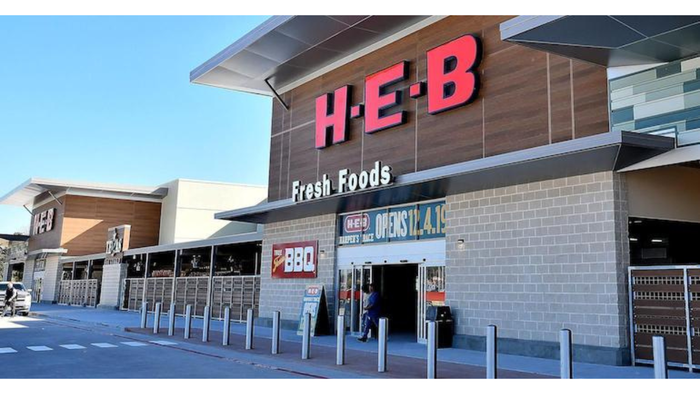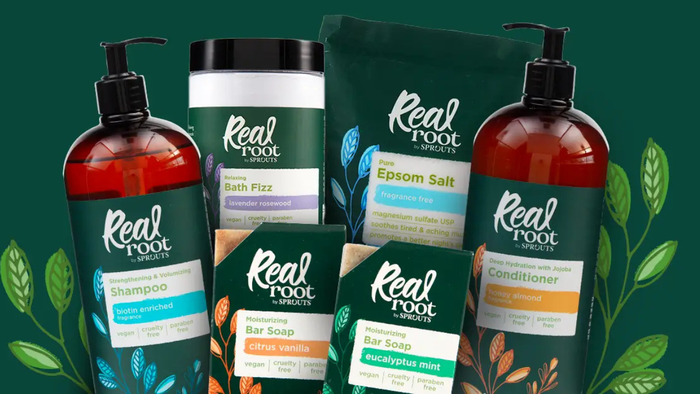Growing gluten-free
January 1, 2018
The gluten-free market is expected to double in the next four years. The biggest challenge facing retailers may be holding the attention of consumers. By Jules Shepard Gluten-free has become quite the buzzword in grocery. For some retailers it is met with twinkling eyes and visions of dollar signs. For others it is met with groans of dread; spawned by a fear that gluten-free is just the latest food fad. Regardless of position, gluten-free is now top of mind for many food retailers—with just cause. It certainly is impressive when a category can defy a recession as gluten-free has with a compound annual growth rate of 30% from 2006 to 2010. What’s more, Packaged Facts, a Rockville, Md.-based research firm, expects the $2.6 billion gluten-free food and beverage market to double in size, exceeding $5 billion by 2015. Many industry observers say that in order to reach that mark, retailers must accurately identify who the gluten-free consumer is and then determine how to cater to them. Defining the gluten-free consumer is a formidable task. The most obvious component of this group are those with celiac disease. However perhaps more noteworthy, recent research suggests many more people suffer from a condition called “gluten sensitivity” or “gluten intolerance.” Previously it was thought that such a condition was unclassifiable, but having now been scientifically identified and recognized, the projected numbers of those with gluten issues are staggering. According to Dr. Alessio Fasano, professor of pediatrics, medicine and physiology at the University of Maryland School of Medicine and director of the Center for Celiac Research, gluten sensitivity affects six to seven times more people than celiac disease—creating another group of lifelong, gluten-free buyers numbering over two million people in the U.S. Other groups contributing to the rising demand for gluten-free products include parents of children with autism spectrum disorder or with ADHD, patients suffering from gastrointestinal disorders like irritable bowel syndrome and Crohn’s Disease, individuals following an anti-inflammatory diet and still others who simply perceive that gluten-free food is somehow healthier. Collectively these groups total approximately 40 million people with an interest in gluten-free products. As the market continues to grow, more and more manufacturers are taking notice and are either adding gluten-free product lines or acquiring gluten-free brands. General Mills’ Betty Crocker Gluten-Free line and reformulated gluten-free Chex cereal mixes, King Arthur’s Gluten-Free mixes and Kellogg’s new gluten-free Rice Krispies are just a couple of examples. Additionally, Smart Balance, a vegan spread and vegan milk product company, acquired the Glutino Food Group in August. The acquisition allows the Paramus, N.J.-based company to enter the gluten-free market with 80 SKUs of gluten-free dry goods, pretzels and frozen foods. As gluten-free fast-becomes mainstream, large supermarket chains, box stores and mass retailers have jumped in to meet the demand of this growing consumer population. Health and natural food stores have felt the presence of these bigger retail players in their formerly “specialty” space, watching as their gluten-free market share has been nearly halved—from 30% to 16%—in only two years. Many of these smaller specialty retailers, which traditionally catered to the gluten-free shopper, are struggling to stay relevant. For Leric Wood, general manager of a David’s Natural Market in suburban Baltimore, the entrance of major chain stores into this category has noticeably cut into his business. Items he used to carry exclusively are now in mainstream distribution so he has been striving to find ways to offer more variety by carrying local and out-of-the-ordinary gluten-free products that cannot be found elsewhere. “We recognize that we must be different to compete in this category,” he says. “However, it’s harder to be different when mainstream stores are treating gluten-free as mainstream now, too.” Wood says nurturing the loyalty—already present in gluten-free consumers—is one key to retaining the gluten-free business. Screening for safe manufacturing practices in purchasing decisions wherever possible, steering customers to tastier gluten-free products and helping decipher often confusing gluten-free labeling are all things that set smaller specialty stores apart from on-line sellers and larger chains, he adds. However, that has not stopped progressive retailers from making strides in this direction. Safeway recently instituted its “Simple Nutrition” program, an in store, color-coded shelf tag system designed to make it easier for shoppers to find better nutrition choices. The program, three years in the making, was launched as a direct response to Safeway’s nationwide survey of more than 1,500 moms, 36% of who said they are cautious about the claims made on food and beverage packaging. Respondents also said they were inundated with conflicting nutritional information and were often skeptical of the nutrition claims on packaging. To help shoppers feel more confident about making better informed food choices, officials at Safeway created this “Simple Nutrition” program to offer consumers a quick snapshot of the nutrition and ingredient benefits that best match their needs. “The growing interest in gluten-free diets made the new messaging in this program an obvious fit,” says Teena Massingill, Safeway’s director of corporate public affairs. “It’s all about enhancing the consumer shopping experience. We want shoppers of all dietary needs to see Safeway as a resource for foods that fit their specific lifestyle and nutrition needs.” Merchandising strategies such as tagging products as gluten-free is progressive for mainstream grocery channels, and certainly benefits the products qualifying for these eye-catching shelf-talkers. However, there is a possibility of “tagging fatigue” becoming a concern as retailers look to add more nutritional tags to the shelf. Smaller organic groceries and chains traditionally dedicated to specialty diet consumers are taking these identifiers to the next level, delineating between certified gluten-free items and items merely claimed as gluten-free by the manufacturer. The FDA only just put forth its proposed definition of gluten-free for food labeling in August 2011. The target date for this standard to become an enforceable—but voluntary—labeling rule is the third quarter of 2012. Hence, there is a possibility that consumers will remain easily confused by just how gluten-free a product making such an uncertified claim really is, at least until this standard is put into effect, and quite likely for longer as manufacturers sort out how best to label and classify their products. Until this definition is in effect, the only means of determining that a food product is safe for those on the gluten-free diet for medically necessitated reasons, is a gluten-free certification. The Gluten-Free Certification Organization (GFCO), the Celiac Sprue Association (CSA), and the National Foundation for Celiac Awareness’ (NFCA) certification program through QAI, all perform regular on-site audits by third-party auditors, including product, ingredient and equipment testing at manufacturing facilities and random point-of-sale product testing with subsequent laboratory tests to determine the parts-per-million (ppm) of gluten in each product. Each agency has a ppm level above which they will not certify a product as gluten-free. Cynthia Kupper, executive director of the GFCO program (a certification agency for gluten-free) says that to date, the organization has performed audits in 12 countries. According to Kupper, certifications such as the one GFCO offers have played an instrumental role in helping to eliminate confusion around often conflicting labeling claims and verbiage. She says many companies opting into these certification programs have seen measurable sales increases, as customers are learning to question products with unsubstantiated labeling claims, and opt for certified products instead. Interestingly, Whole Foods recently drew a line in the sand on this labeling issue. Whole Foods has publicly urged labeling clarity, but in the meantime has decided that the only vendors it will sign as gluten-free in stores are those which are certified gluten-free by one of the independent third-party agencies or those with quality assurance and allergen control programs which use a 20 ppm threshold (the standard proposed by the FDA). For retailers, educating staff on these certifications, who can in turn pass that knowledge along to customers, will further build trust with the already-loyal gluten-free consumer. Wood says his staff at David’s Natural Market will often steer customers to certain “safer” gluten-free products and even opens gluten-free items for customers to sample. This swelling, steady and serious customer base is one that he does not want to lose, so he does what he can to make shopping in his store more attractive to these customers. Thinking Outside the Box Even larger chains are beginning to think of new ways to stay ahead of the growing gluten-free curve. Acme Markets recently partnered with Dietz & Watson meats to launch the first dedicated gluten-free deli in its top-producing Acme store in the Philadelphia area. Company officials say the idea to create the segregated eight-foot deli case came from the desire to help the increasing number of consumers following a gluten-free diet to shop with more confidence. In all, Philadelphia-based Dietz & Watson offers more than 400 gluten-free choices, of which, about 20 will be available at this one-of-a-kind deli case. Dietz & Watson and Acme are taking every step possible to prevent gluten from touching any product in the special deli case by adhering to strict guidelines to maintain the gluten-free integrity of the products. For example, according to Steve Riley, marketing director for Dietz & Watson, dedicated slicers, counters and scales are assigned to the gluten-free deli products which will be located away from other equipment and deli staff will wear special blue gloves when handling gluten-free products to avoid issues with cross-contamination. “This is a really big deal and an honor to be involved in the first-ever, gluten-free deli,” says Riley. The new-concept deli aligns with Acme’s gluten-free program in center store, which debuted in the fall of 2010. Among other things, the program includes signage and special merchandising sets in select stores to help make it easier for customers to find gluten-free products. Additionally, customers can also go to Acme’s customer service department to pick up an in-store shopping list/guide to gluten-free products throughout the store. The retailer features a more extensive gluten-free shopping list on its website. Jules Shepard, founder of www.JulesGlutenFree.com and developer of Jules Gluten Free All Purpose Flour and baking mixes, is recognized as a top gluten-free cooking expert. She has authored three books on gluten-free cooking and living and co-founded www.1in133.org.
About the Author
You May Also Like



.png?width=700&auto=webp&quality=80&disable=upscale)
